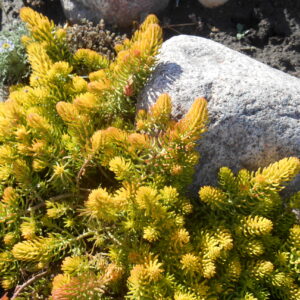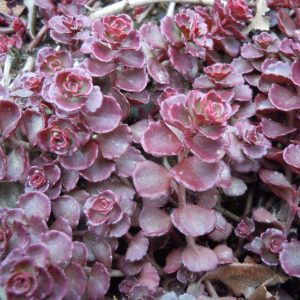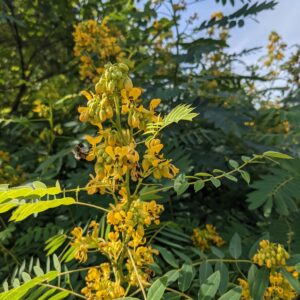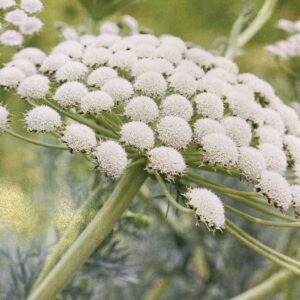Perennials & Biennials
Showing 409–416 of 485 results
-
Scutellaria diffusa Turkish skullcap Z 5-10
Small snapdragonish violet flowers with white markings on two adjacent lower lips looking like an open book in summer along short stems. Flower clusters top tidy mounds of sage-colored, oval, hairy leaves.
OUT OF STOCK
Small snapdragonish violet flowers with white markings on two adjacent lower lips looking like an open book in summer along short stems. Flower clusters top tidy mounds of sage-colored, oval, hairy leaves.
Size: 4-6” x 12”
Care: sun in well-drained soil
Native: Turkey, Lebanon and Syria
Wildlife Value: deer resistantFirst published by Swiss botanist A.P.de Candolle in Prodr. 12: 421 (1848)
-
Scutellaria incana syn. Scutellaria canescens, Scutellaria villosa Downy skullcap Z 4-9
Flowers of spikes of purple-blue tubes ending in two open lips, the lower lip having a white blotch, blooming for months from July to September, if deadheaded
Flowers of spikes of purple-blue tubes ending in two open lips, the lower lip having a white blotch, blooming for months from July to September, if deadheaded
Size: 2-3’ x 12-18"
Care: sun to part shade in moist well-drained to well-drained soil. Reblooms if deadhead after 1st flush of flowers
Native: NY to WI, Georgia to TX, Wisconsin native
Wildlife Value: Deer resistant. Its nectar feeds small butterflies, Bumblebees and Hummingbirds.The name Scuttelaria is from Latin scutella meaning a small dish or saucer referring to the shape of the persistent calyx, a covering at the flower’s base. Incana means grey referring to the tiny hairs on stems and undersides of leaves giving a greyish color. Named by Johann Friedrich Theodor Biehler, German botanist from the plant specimens in Christian Sprengel’s (1750-1816) herbarium in 1807. How did German botanist Sprengel, who never set foot in America, come to have a pressed specimen of this native American plant? Sprengel and German botanist, minister and college president, Carl Ludwig Willdenow (1765-1812) were close collaborators. Another German botanist Heinrich Ernst Muhlenberg (1753-1815), living in Lancaster Pennsylvania, sent many American plants specimens to Willedenow. Scutellaria incana is native to and grows in what is now called Muhlenberg Meadow in Lancaster County PA. These connections make it likely that the specimen Biehler saw came from Henry Muhlenberg.
-
Scutellaria resinosa syn. Scutellaria wrightii Prairie skullcap Z 4-9
Two-lipped, deep violet-blue tubes bloom from spring to fall
Two-lipped, deep violet-blue tubes bloom from spring to fall
Size: 10” x 10”
Care: sun to part shade in well-drained to moist well-drained soil, drought tolerant
Native: Colorado, NM, KS, Oklahoma, TX, collected on the Canadian River, tributary of Arkansas River
Wildlife Value: deer & rabbit resistant. Nectar and pollen attract butterflies and bees.Described by botanist John Torrey in Annals of the Lyceum of Natural History of NY 2: 232 (1828)
-
Sedum rupestre ‘Angelina’ syn. Sedum reflexum ‘Angelina’ Spruce-leaved stonecrop Z 4-8
Chartreuse, turning red-orange in fall, needle-like leaves blooming with yellow flowers June-August but the leaves are the feature.
Chartreuse, turning red-orange in fall, needle-like leaves blooming with yellow flowers June-August but the leaves are the feature.
Size: 4-6” x 1-2’ spreader
Care: sun in well-drained to moist well-drained soil.
Wildlife Value: Rabbit and Deer resistant. Drought tolerant.Species grown at America’s 1st botanic garden, Elgin Botanic Garden 1811
-
Sedum spurium ‘Dragon’s Blood’ syn. Phedimus spurius ‘Dragon’s Blood’ Caucasian stonecrop Z 4-9
Mat-forming evergreen. In spring red encircle its fleshy, green, round leaves. In summer leaves turn bronze and in fall deep burgundy. Small, bright pink, star-shaped flowers.
Mat-forming evergreen. In spring red encircle its fleshy, green, round leaves. In summer leaves turn bronze and in fall deep burgundy. Small, bright pink, star-shaped flowers.
Size: 4-6" x spreading 12-18"
Care: sun in well-drained to moist well-drained soil
Native: Caucasus Mountains
Awards: Royal Horticultural Society Award of Garden Merit; Great Plant PickFranklin Gardens in Big Springs Arkansas sold this in 1948 for 50 cents calling it “a new sedum. . . “Called “a new Sedum that will surely become popular” New and Noteworthy Hardy Plants Spring Flor-Acres’ Perennials 1950 p. 13
-
Sempervivum tectorum Hens and chicks Z 3-10
Rosettes of succulent leaves
OUT OF STOCK
Rosettes of succulent leaves
Size: 4” x 4”
Care: sun in well-drained to moist well-drained soil
Native: Alps & Pyrenees MountainsGrown in gardens for thousands of years. Sempervivum means “live forever.” Romans planted Hens and chicks on their roofs to ward off lightening. As a succulent it holds water and is probably more difficult to catch fire. “This practice was preserved for historians when Charlemagne (720-814), first Holy Roman Emperor and unifier of a large part of northern Europe, ordered that all villagers within his crown lands plant houseleeks on their roofs He decreed: “Et ille hortulanus habeat super domum suam Iovis barbam. (And the gardener shall have house-leeks growing on his house. Capitulare de villis, about 795, LXX.)”
-
Senna hebecarpa syn. Cassia hebecarpa Wild senna Z 3-8
Six inch long taxicab yellow flower clusters along the stem in July – August
Six inch long taxicab yellow flower clusters along the stem in July – August
Size: 4’ x 2-6’
Care: full sun in moist well-drained soil
Native: all North America east of Mississippi River from Hudson Bay south to Georgia and Tennessee, Wisconsin native
Wildlife Value: attracts bumble bees and wasps. A legume – it adds nitrogen to the soilCollected by 1753.
-
Seseli gummiferum Moon carrot Z 5-9 self-seeding biennial or short-lived perennial.
Five-inch diameter mound of many circles of pale pink to white flowers atop silvery, frilly, fern-like foliage flowering in mid-summer into early fall.
Five inch diameter mound of many circles of pale pink to white flowers atop silvery, frilly, fern-like foliage flowering in mid-summer into early fall.
Size: 2-3’ x 12-18”
Care: Sun to part-shade in well-drained to moist well-drained soil
Native: Crimea, Turkey and South Aegean
Wildlife Value: Deer resistant. Butterfly magnet; host for caterpillar of Eastern swallowtail butterfly.Seseli is an ancient Greek name of an umbelliferous plant. This species first described by Linnaeus in 1735. Re classified and renamed in 1830 in Prodromus systematis naturalis regni vegetabilis, sive, Enumeratio contracta ordinum generum specierumque plantarum huc usque cognitarium, juxta methodi naturalis, normas digesta.






